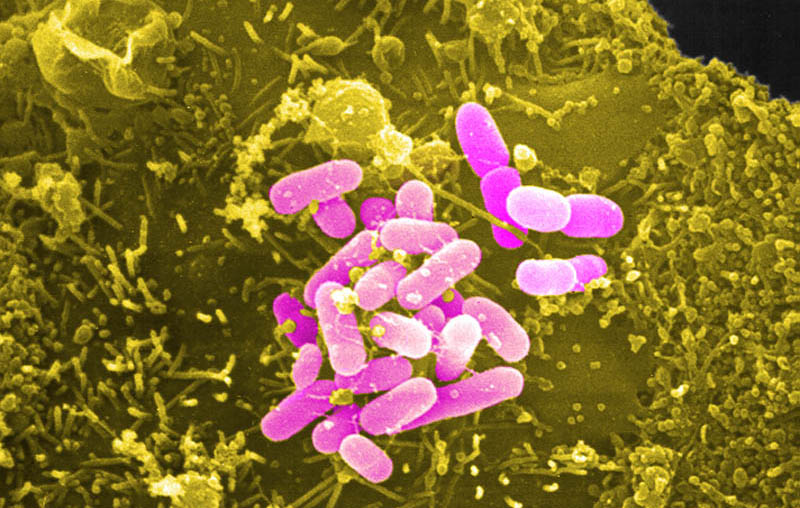Microbes
are ubiquitous; your own body contains ten times as many microbial cells
as human cells. Many species inhabit environments which humans consider
"extreme," such as superheated sulfuric acid in deep-sea thermal vents,
or alkaline salt-saturated soda lakes.
- Microbes
make history. From wine and cheese,
through tuberculosis
and AIDS, our microbial companions have shaped human destiny.
Who first saw single microbes? Who learned to grow them in culture?
How have the classic Koch's postulates been adapted to molecular pathology?
- Genetic
regulation. In natural environments, microbes survive
extreme changes in their environment. We study current research
on genetic response, and what these mechanisms can tell us about
microbes inside the human environment.
- Extreme
environments. How did microbes evolve to live in habitats as
diverse as a cow's rumen, or soil two miles down, or (possibly)
the crust of Mars?
- Microbial
machines. Bacterial structures, such as DNA replication,
ATPase, and cell division, are understood at the molecular level.
Can these structures tell us how to build nanomachines?
- Bacterial
biochemistry. Some bacterial species
can "eat" rock; "breathe" uranium; or photosynthesize on beef broth.
Understanding their bizarre chemistry helps us better understand human
biochemistry--and improve scores on MCAT or GRE.
- Microbes
in ecosystems. Bacteria and fungi perform unique and
critical functions in our biosphere, particularly in the nitrogen
cycle and in decomposition. Yet less than 0.1% of all bacterial
species have yet been identified.
- Evolution.
The first living organisms to evolve were microbes. How did
the first living cells give rise to bacteria, eukaryotes, and archaea?
Were the first cells built of RNA? What RNA "fossils" remain
within our own cells?
- Pathology.
How do bacteria coexist with the human host? How and why do
some species cause disease? We focus on respiratory diseases
such as tuberculosis, and sexually transmitted diseases such as Chlamidia
and Hepatitis C.
- Viruses.
How do viruses take over a cell's genetics and physiology? Every
kind of cell can be parasitized by viruses--including microbial cells.
- Emerging
pathogens. Escherichia coli
0157, Listeria, Pfisteria. Why and how
do new diseases appear? How do epidemics and pandemics shape
human population?
Send comments to professor:
slonczewski@kenyon.edu |


